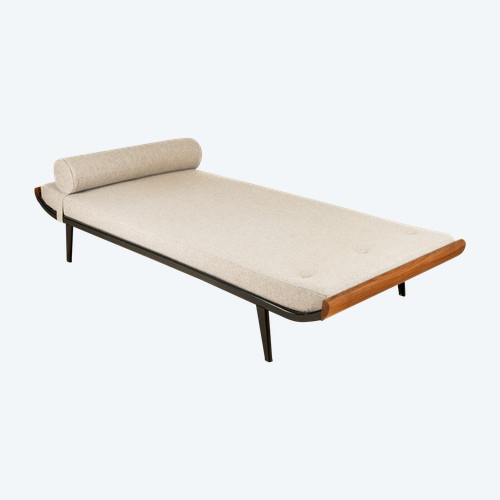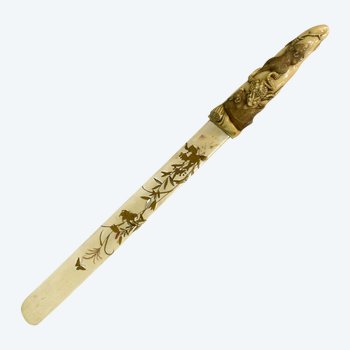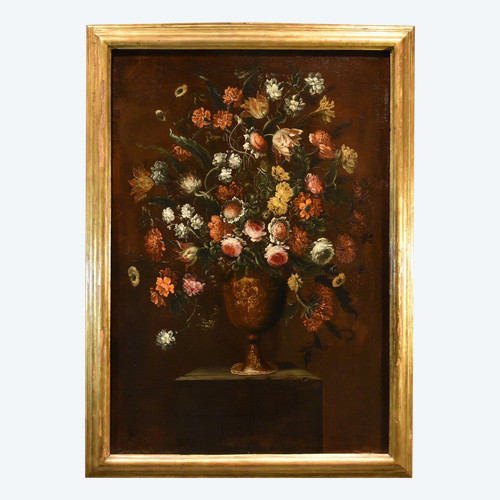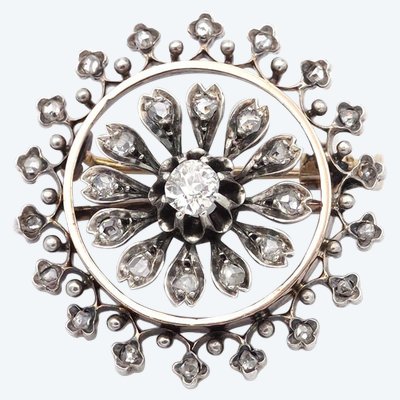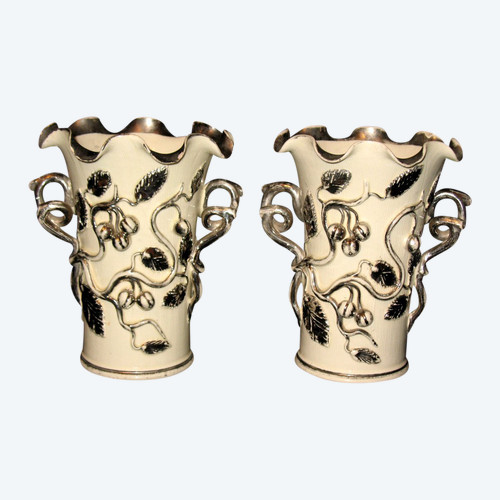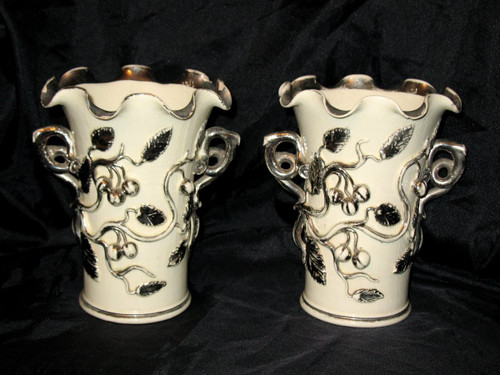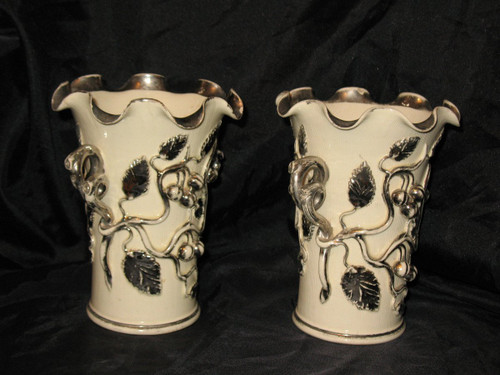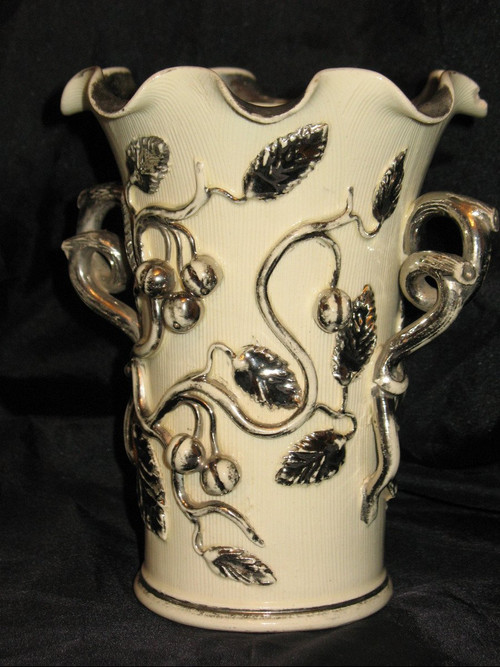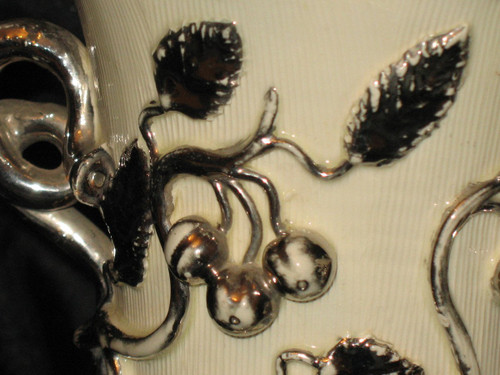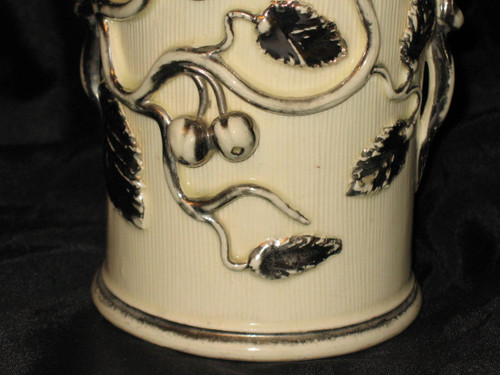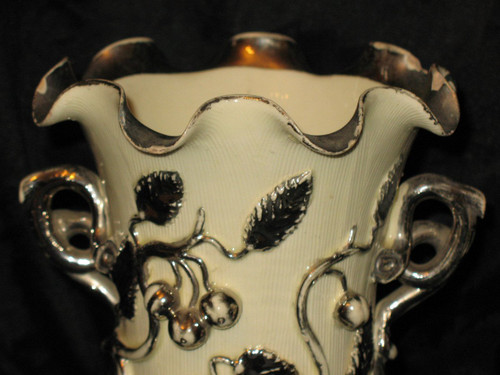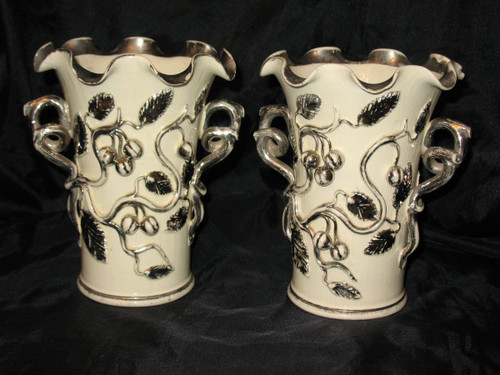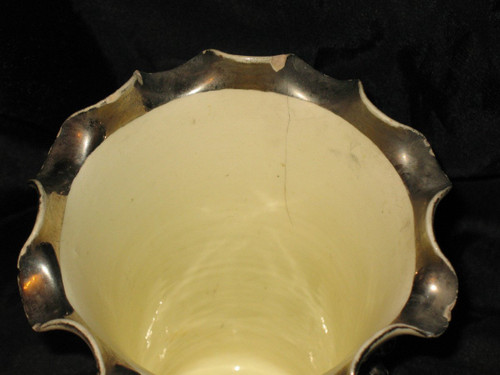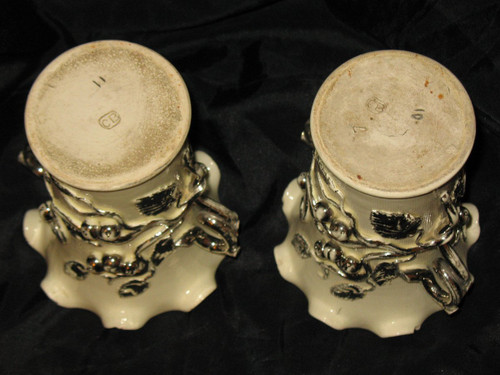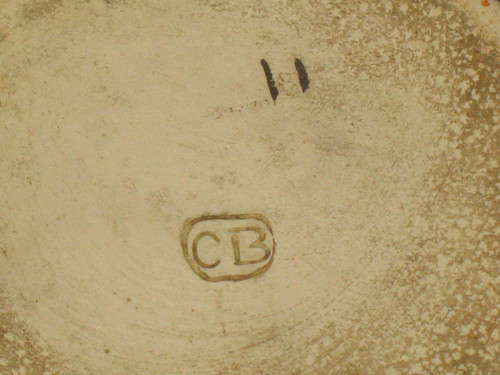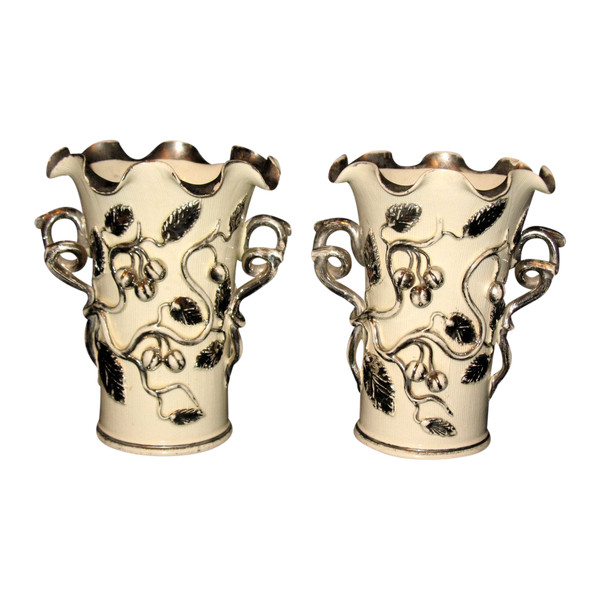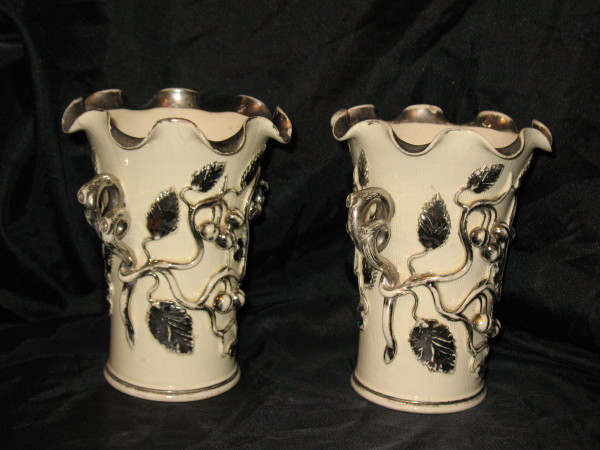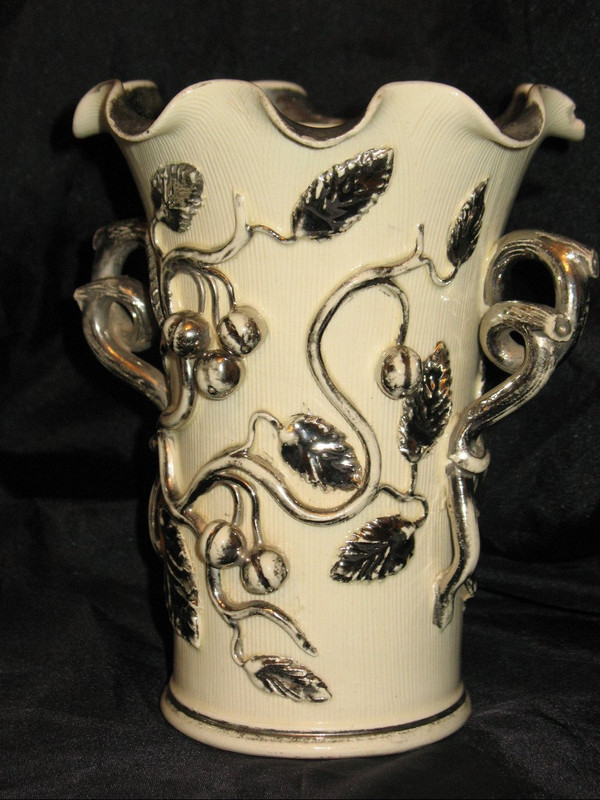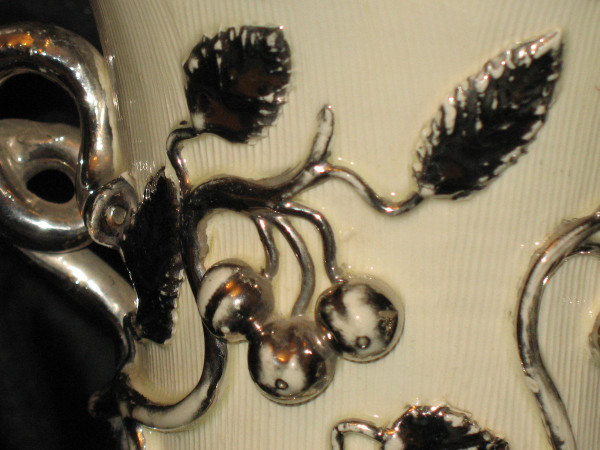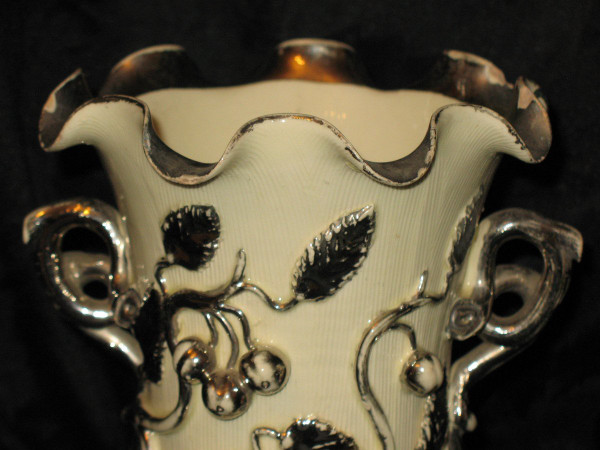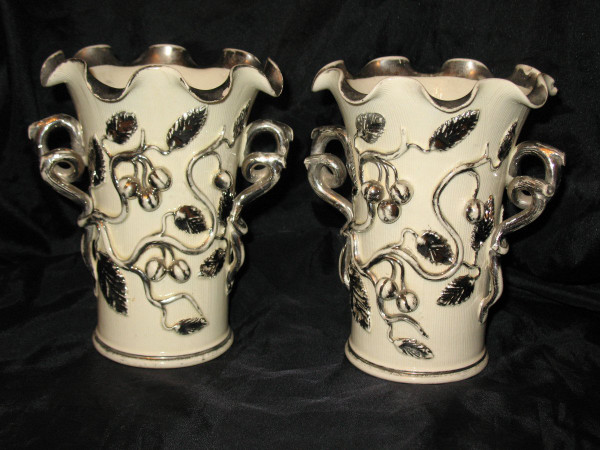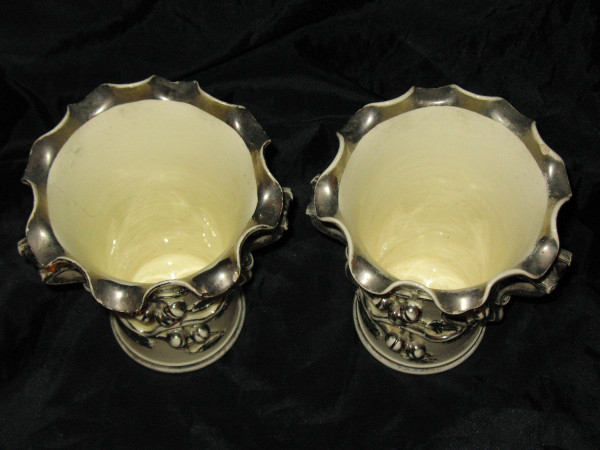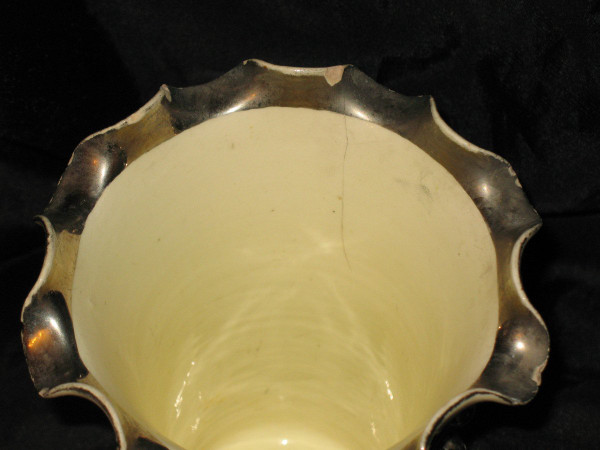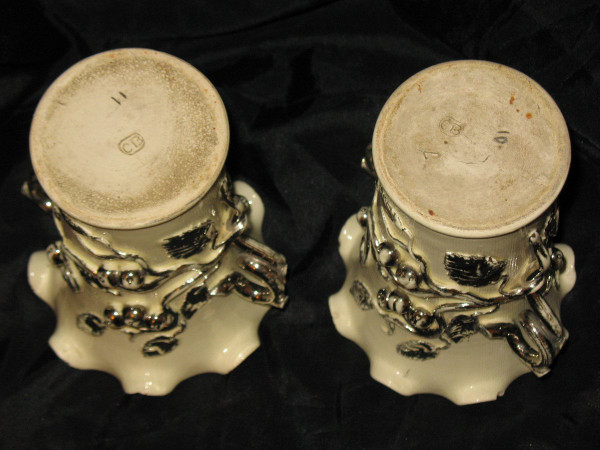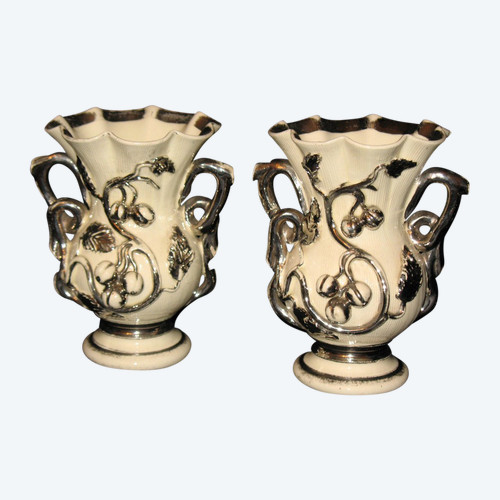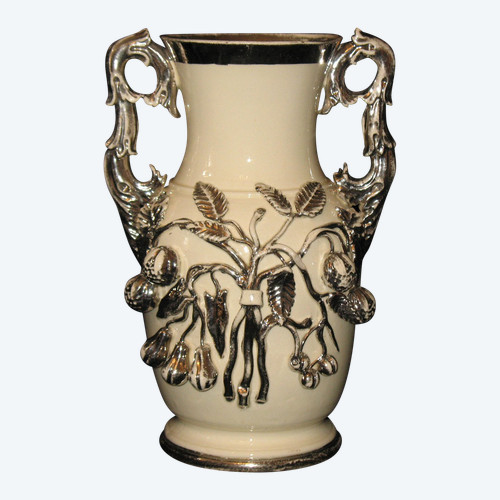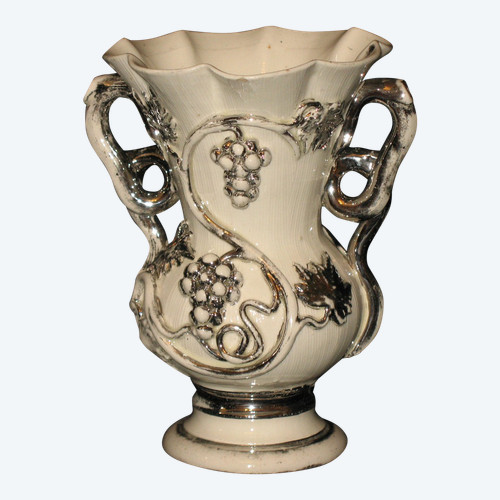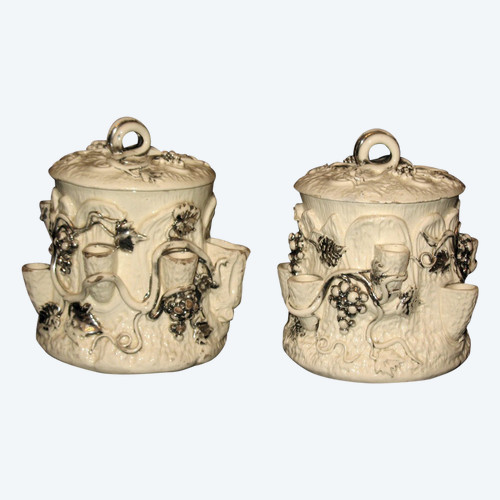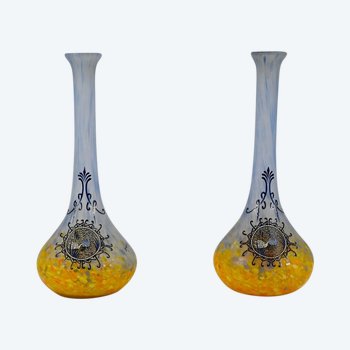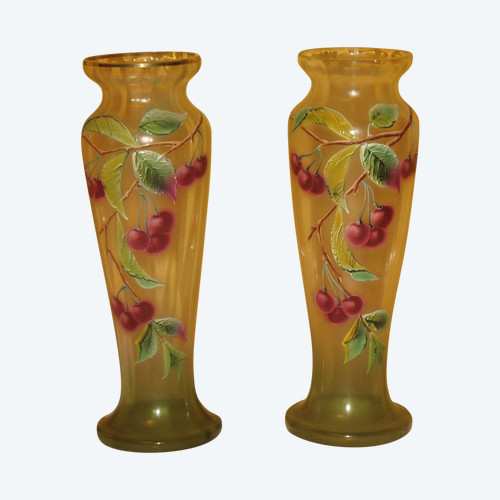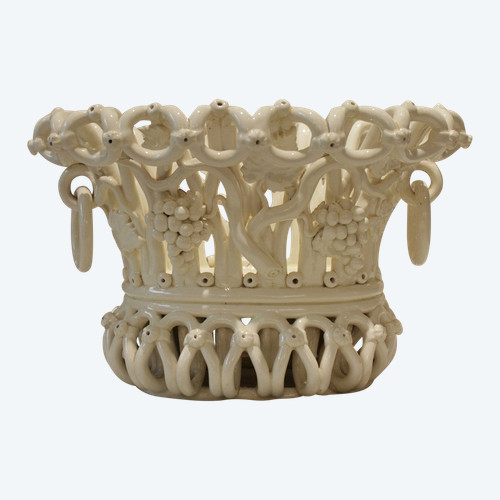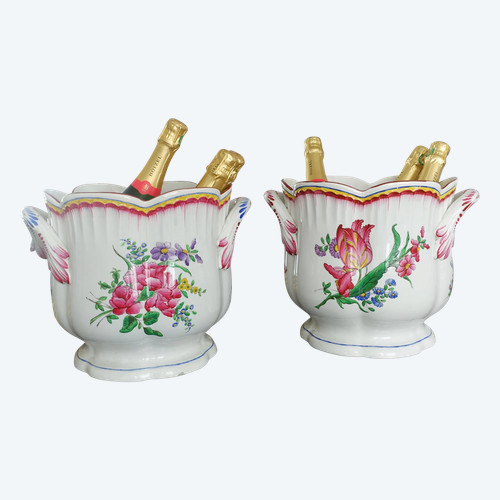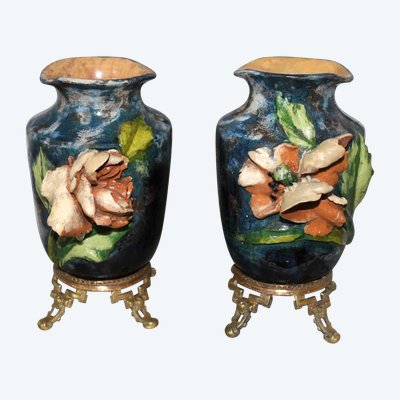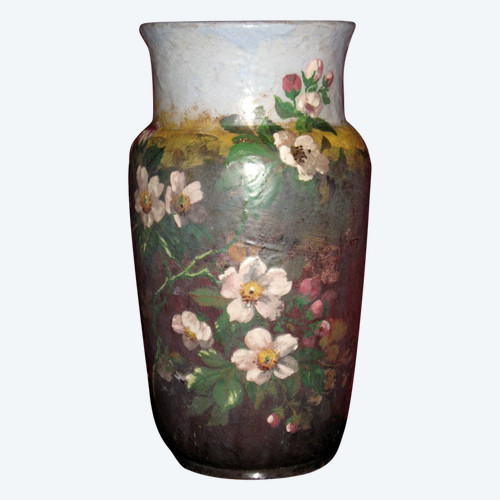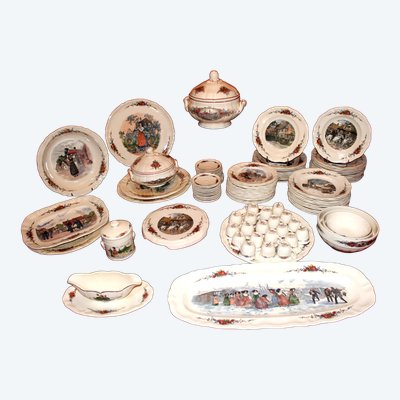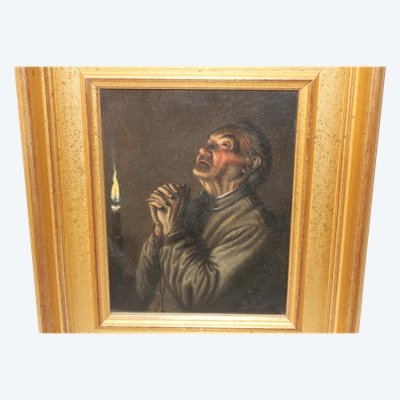This description has been translated and may not be completely accurate. Click here to see the original
Pair of large Langeais earthenware vases decorated with gooseberries, 19th century
Mark in hollow below " C B " for Charles Heard de Boissimon, circa 1862
Creamy white background with platinum highlights
Vases with poly-lobed rim
Handles in the shape of twisted branches
Decorated with gooseberries in the round and enhanced with platinum
Intertwined foliage
Vases entirely combed symbolizing the bark of a tree
Good general condition
Slight wear of the plate, small chips at the edge of a neck and a 5 cm hair inside the other
Height : 17,5 cm
Diameter at the neck : 14 cm
Diameter at the base: 9 cm
History of the earthenware :
In 1839, aged 22, Charles de Boissimon settled in Langeais with his cousin, they founded a company of ceramic products and refractory bricks. Presented in 1841 at the Exhibition "of the products of industry and arts of Tours", they receive a silver medal, but it is with the making of decorated potteries that he will create his style. He participated in many international exhibitions and won numerous medals.
In 1850, he became the sole owner of the factory. The materials used at that time already offered great possibilities of colors obtained from metallic oxides such as chromium, cobalt, copper, tin, iron, manganese, lead, urethane, zinc... which allowed to obtain greens, blues, greys, yellows, shades of red, browns and ivory.
Charles began to offer his customers vases, cups and lamps decorated with grapes and vine shoots. Charles de Boissimon was also a winegrower and would like to be inspired by the nearby nature. The production was very diverse: ivy berries, currants, acorns, cherries...
Between 1850 and 1860 there will be a real explosion of techniques. Brongniart advised Charles to add kaolin to the Langeais clay to make it even more malleable. C. de Boissimon will then be able to give free rein to his imagination. We find vases, woven baskets...
In 1862, Charles de Boissimon filed a patent for "printing gold and platinum on vitrifiable materials". This material is still little known, he imports it from Peru and Chile. This is the beginning of the period of Langeais with platinum decoration. This inalterable and stainless metal gives to the earthenware an incomparable brightness.
Charles de Boissimon dies in 1879. His son, a doctor, left the management of the factory to Paul Arthur Busson de Langeais. Little investment was made in the factory. In 1889, he dies in his turn. His widow will do everything to save the company but in vain.
The company was sold in 1909. The new owners try to revive the factory and make again artistic earthenware that they intend to foreign markets. The war of 1914 broke out. The factory is devoted only to the production of refractories. At the end of the war, the tastes changed, the production of earthenware is definitively abandoned.
Ref: UKI5Y133IV

